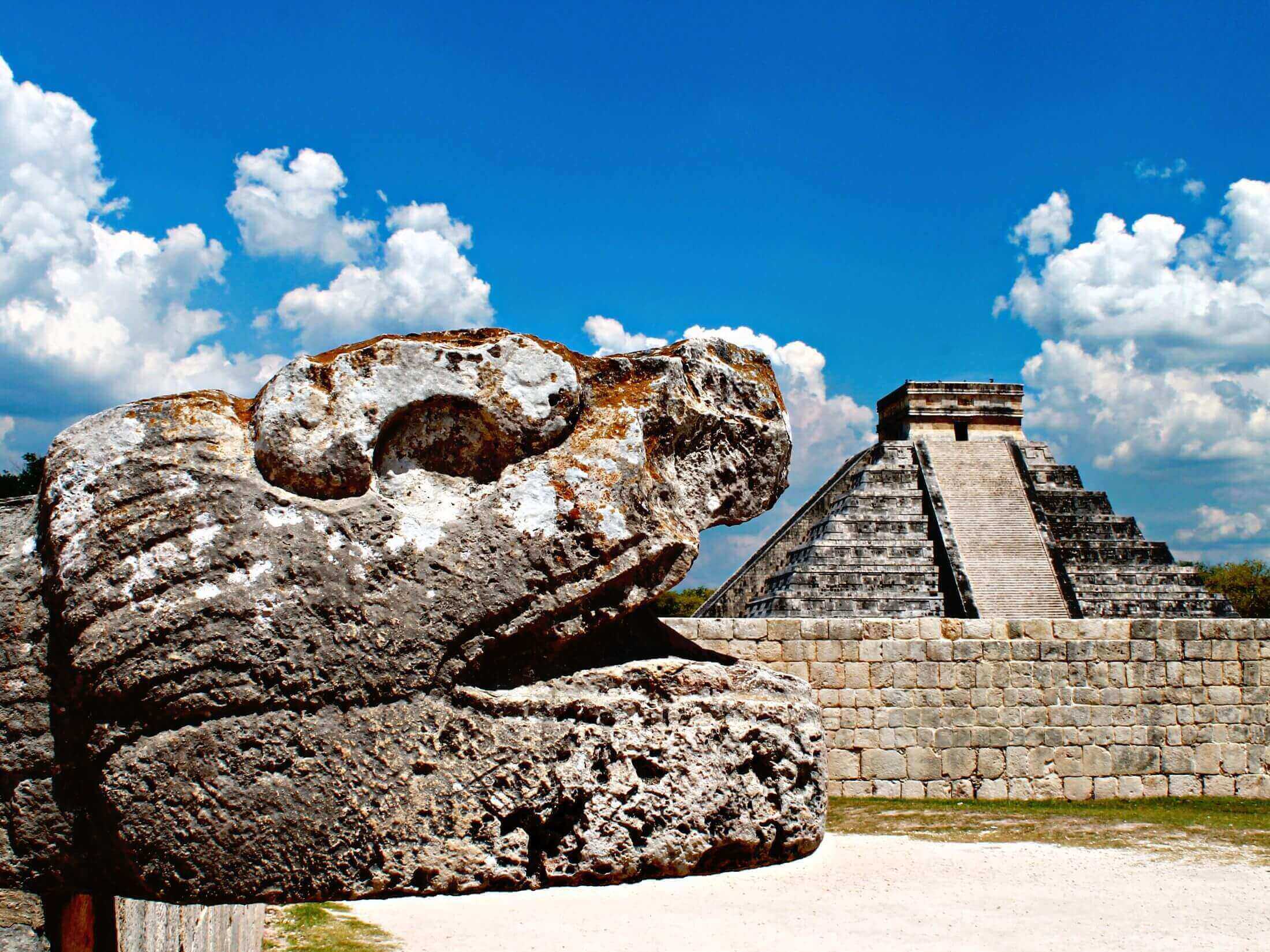This ancient Mayan settlement that flourished in the ninth and tenth centuries can be found still on the Yucatan Peninsula in Mexico and is part of the seven wonders of the world. This Mayan place was highly influenced by the Toltecs and several notable monuments and temples were built there, “El Castillo” the most visible one, a stepped pyramid that rises 79 feet above the Main Plaza.
This significant step pyramid found in the heart of this city was built as a shrine to the god Kukulkan. It has 365 stairs, one for each day of the year, and the afternoon sun casts triangular shadows that appear to be a feathered serpent slithering down the surface of the pyramid’s north staircase toward the snake headstone at the foot during the spring and summer equinoxes.
Although this place draws visitors all year round due to its main pyramid, it can not be climbed, and none of the monuments found here can be approached closely really, it can be visited on a Chichen Itza tour, where, by yourself or accompanied by an expert tour guide you can tour this ancient city while learning some of the history and facts about Chichen Itza.
Chichen Itza Facts and History
As one of the first facts about Chichen Itza, it is believed that the Itzáes settled at “Chichén Itzá” in the ninth century A.D. It was allegedly Putún or Chontal Maya who created a wide domain with a united society, with Chichén Itzá constituting its heart. The city was seized by the Toltecs, a group famed for their formidable warriors, near the end of the 10th century and abandoned in 1250 A.D. for unexplained reasons. This city was so powerful that even centuries after it had collapsed, it was still a site of prayer and pilgrimage, and in early 1540 A.D., Mérida’s founder, Francisco de Montejo, proposed making it the country’s capital.
When the Spaniards first came to the Yucatan Peninsula in the early 16th century, the majority of the Mayan people were living in rural areas, and the Mayan city had already been abandoned. As a result, there was little reason to suppose that these rural settlements had a rich history of creative and scientific achievements. Nonetheless, Chichén Itzá retained its aura as a sacred site to such an extent that when the Spaniard Francisco de Montejo invaded Yucatán, he urged that the province’s capital be moved there, even if the idea ultimately failed.
What’s The Chichen Itza location
Chichen Itza is a Mayan ruins complex in the northern half of Mexico’s Yucatan Peninsula. Chichen Itza was a bustling city in pre-Colombian times, with a diversified Mayan population numbering in the tens of thousands. The center of the Chichen Itza site is around 5 square kilometers (1.9 square miles), with smaller-scale residential structures stretching for a significant distance beyond it. In the following parts, you will learn more about the history of Chichen Itza and its many attractions.
Kukulkan Pyramid Facts
Chichen Itza’s primary attraction is the Kukulkan pyramid, also known as “El Castillo” by locals. The great Kukulkan, the feathered serpent god, was worshiped by ancient Mayans and the majority of Mesoamerican people in this 75-foot-tall temple, where astrological activities were also performed.
The temple of Kukulkan has been the main center of Chichen Itza since the ancient era, attracting many historians due to its spectacular structure, which shows the Mayans’ immense grasp of mathematics, astronomy, geometry, and acoustics.
Unfortunately, due to conservation concerns, the Federal Government has barred tourists and visitors from climbing the pyramids or any neighboring sites since 2008. If you still want to visit this ancient location, we have an outstanding Chichen Itza tour that will allow you to admire the pyramids from above while learning about Mayan mythology and culture.
It’s One of The Seven Wonders of The World
Except for the Great Pyramid of Giza, the initial list of the “7 marvels of the ancient world” was established by Hellenic visitors who were astounded by the most astounding man-made buildings from more than 2000 years ago, but, Bernard Weber, a Swiss-born Canadian filmmaker, established the New7Wonders Foundation in 2001 to determine the modern era’s new seven wonders and encourage public voting. More than 100 million votes were cast, suggesting that people from all around the world agreed, and the final results for the new list of the world’s seven wonders were announced in 2007.
If you found this article interesting and would like to visit this wonder of the world, visit our Instagram and check out all of our tours.

